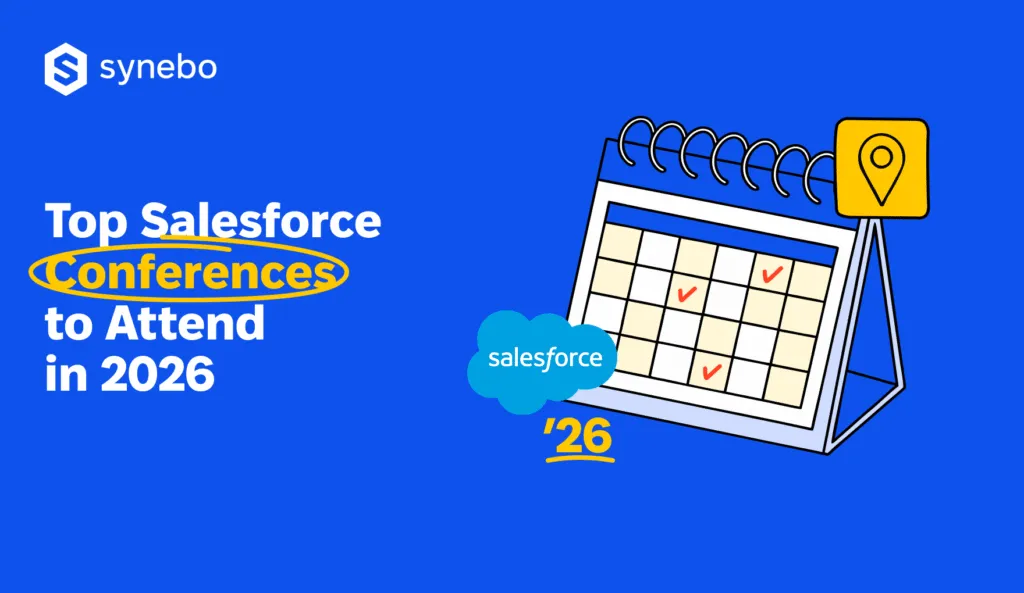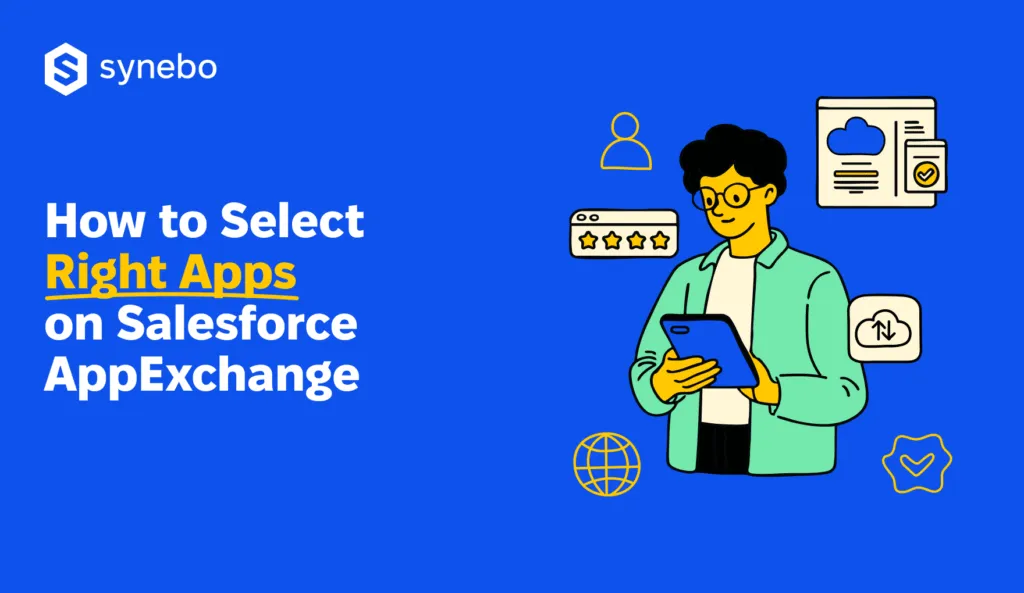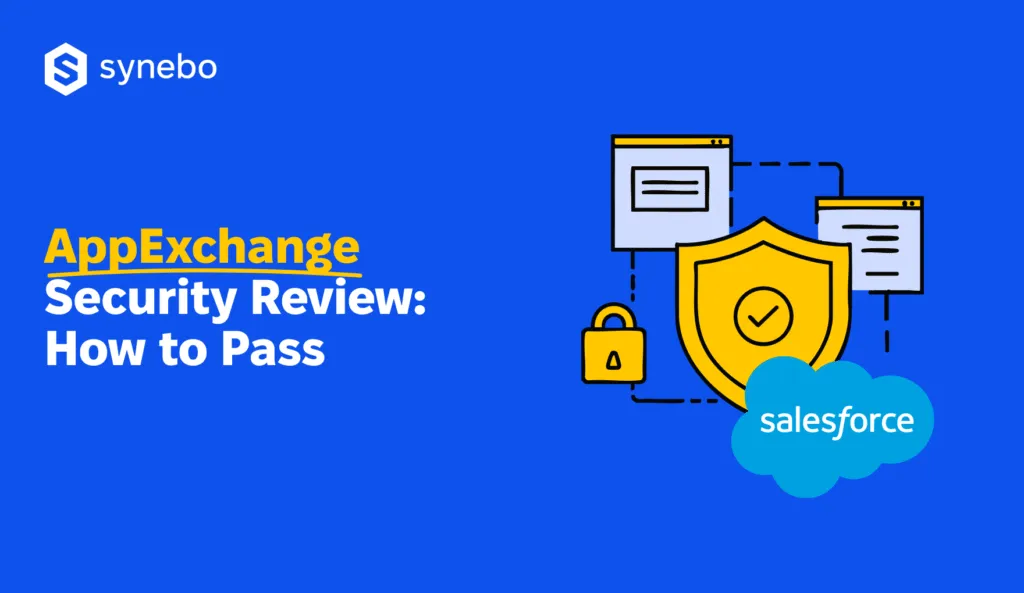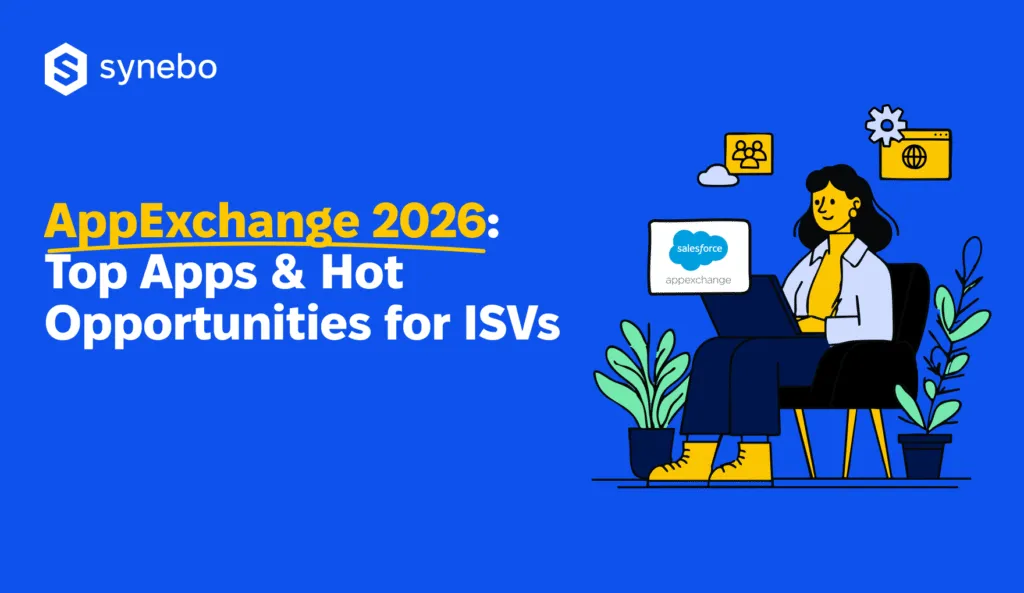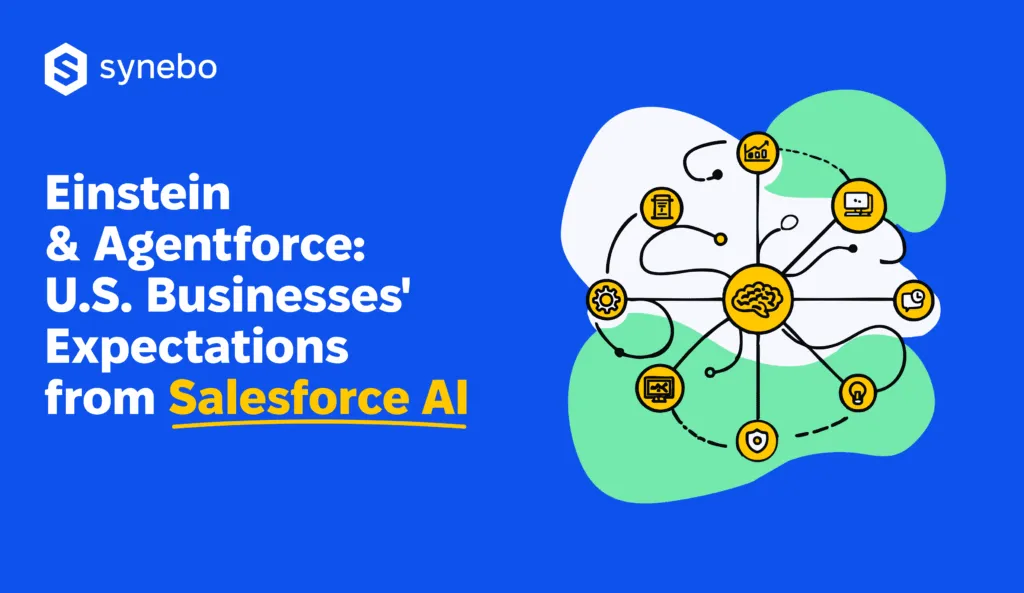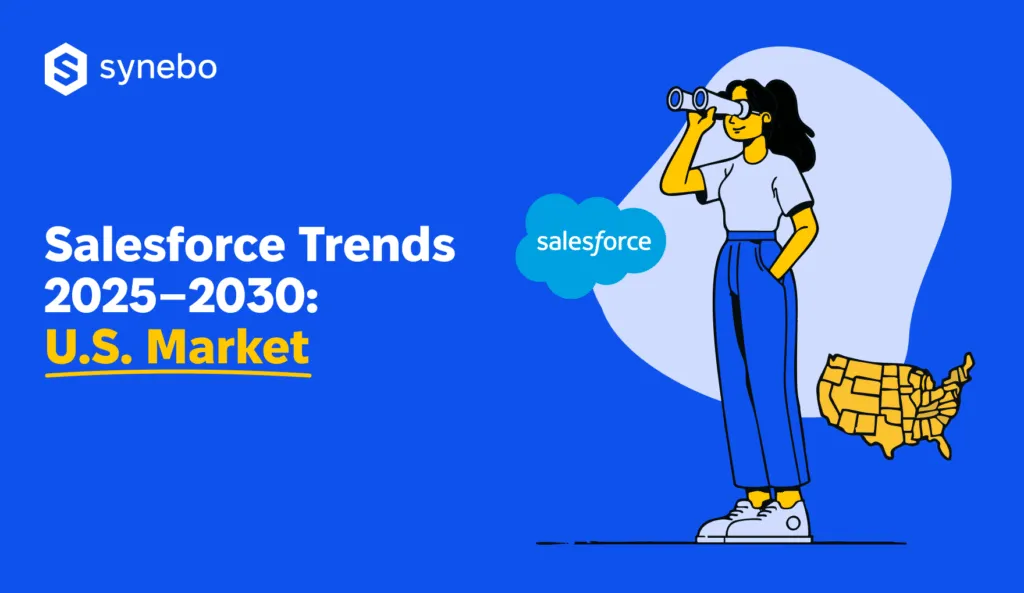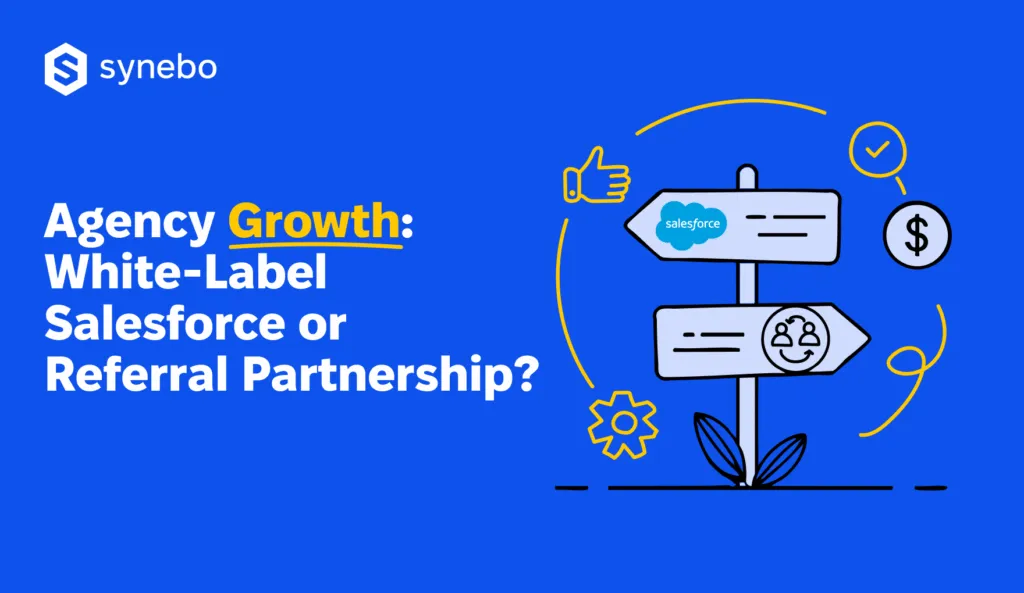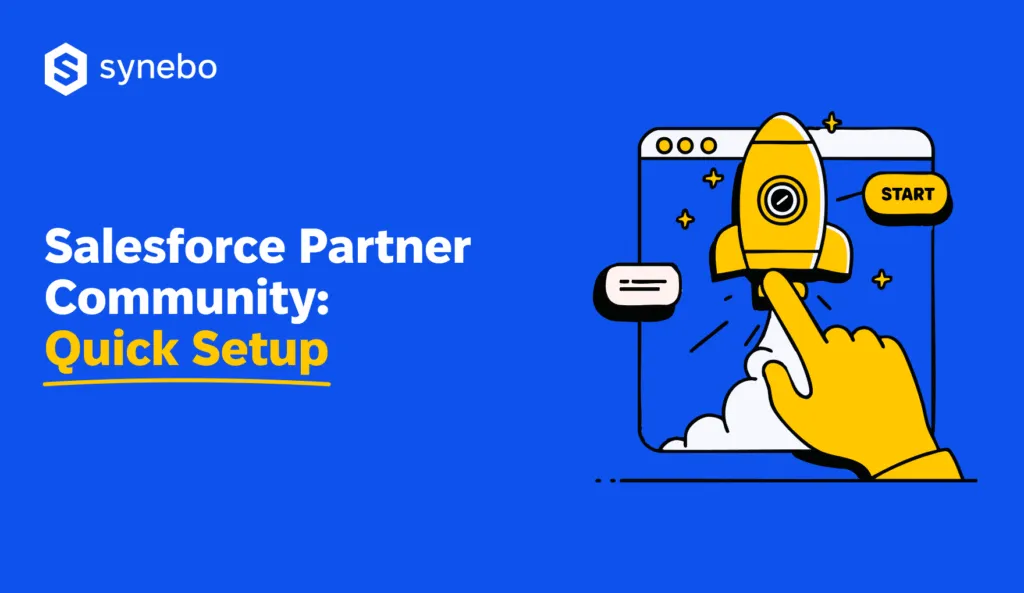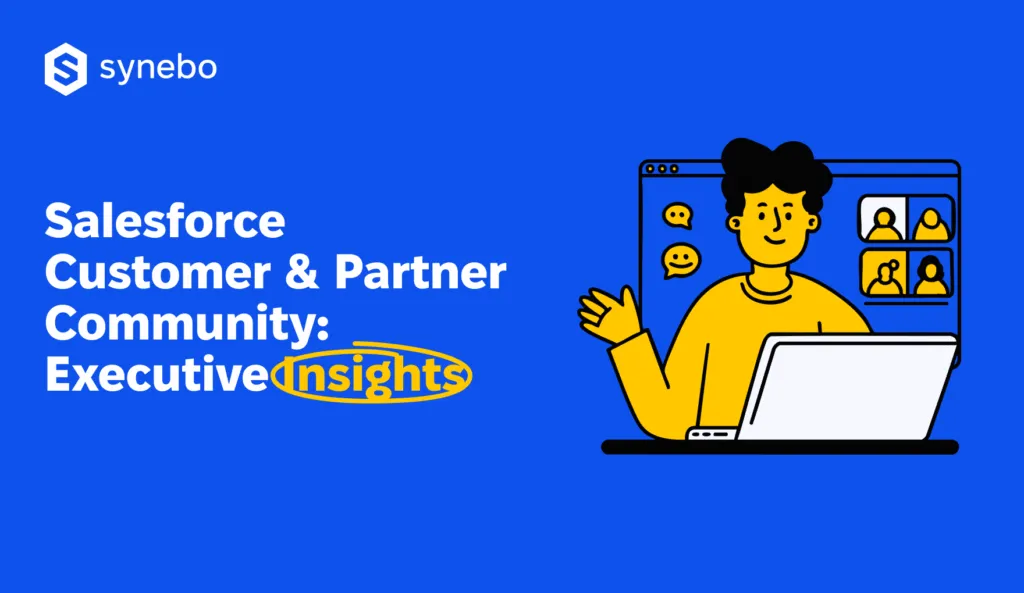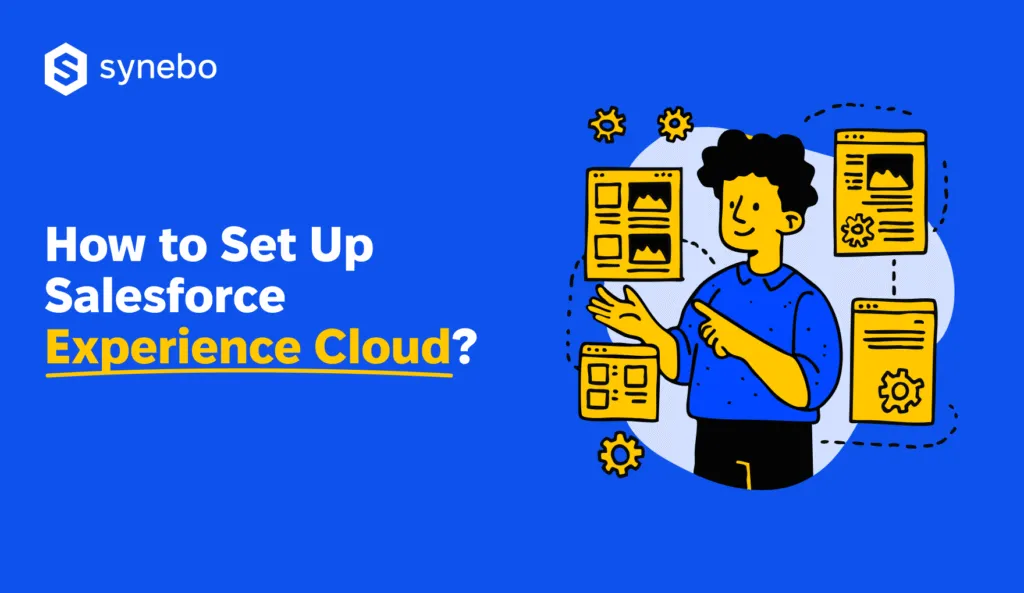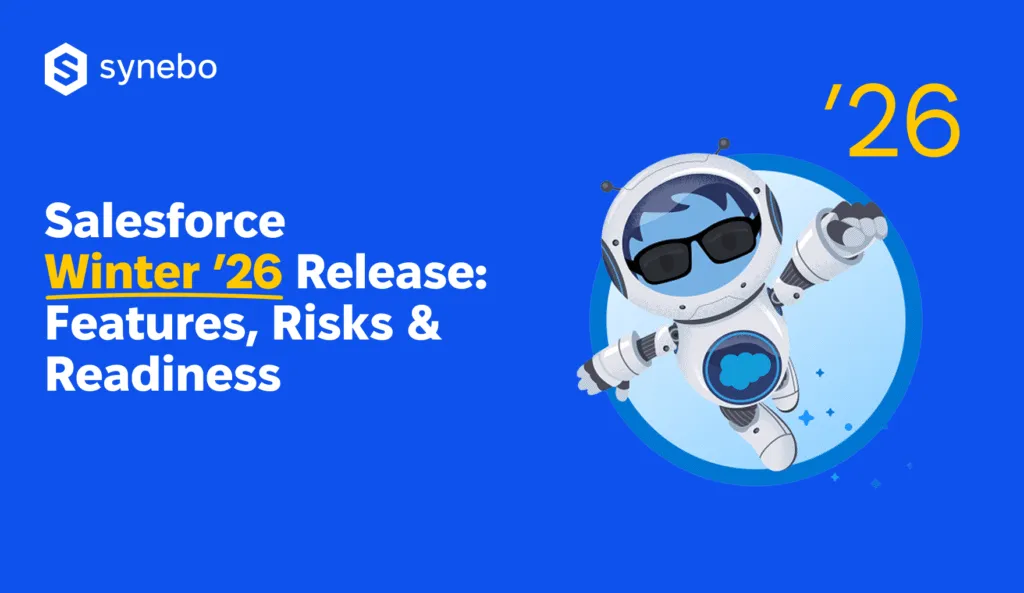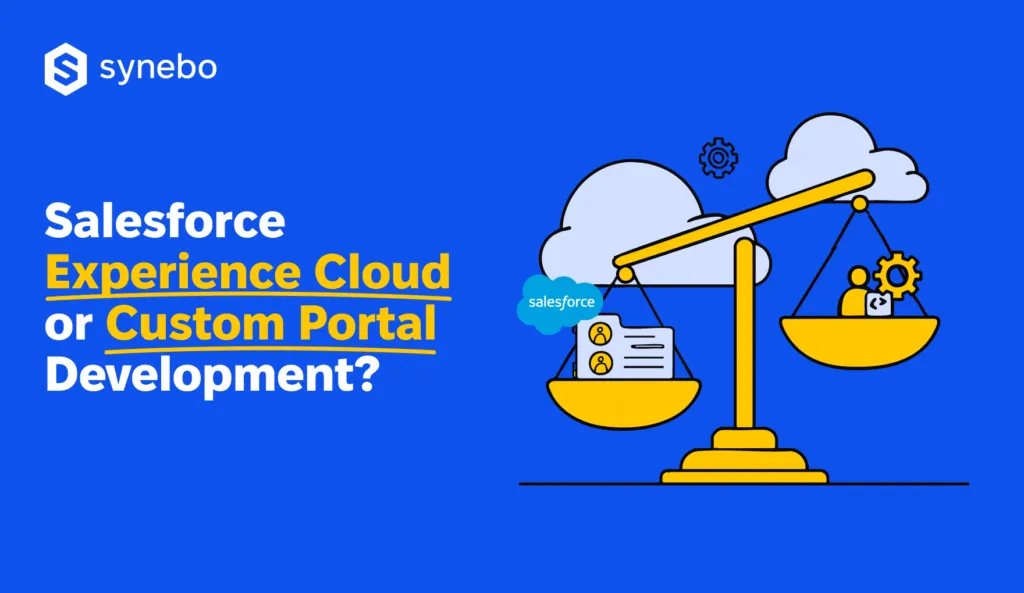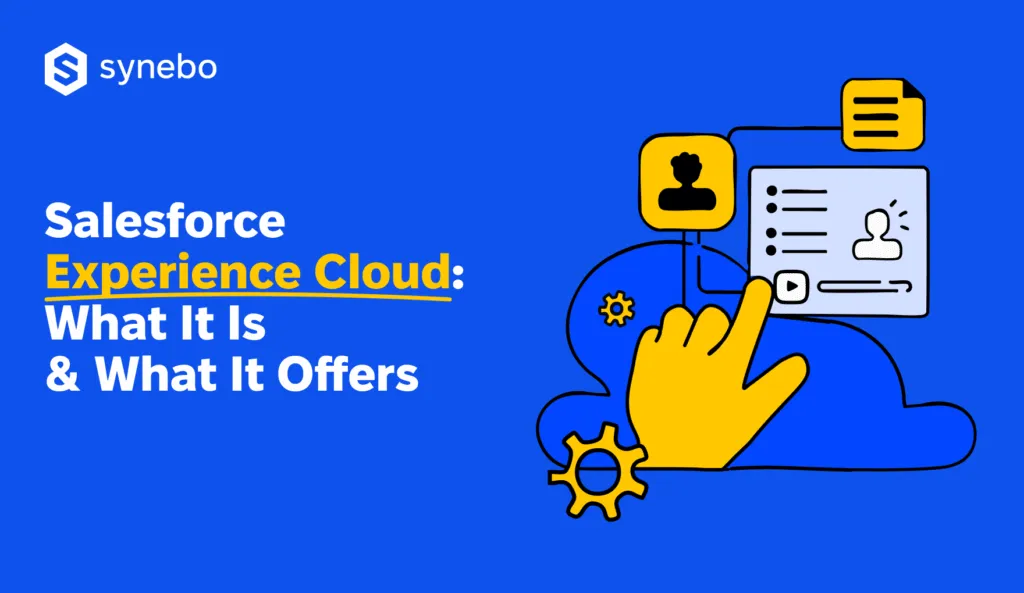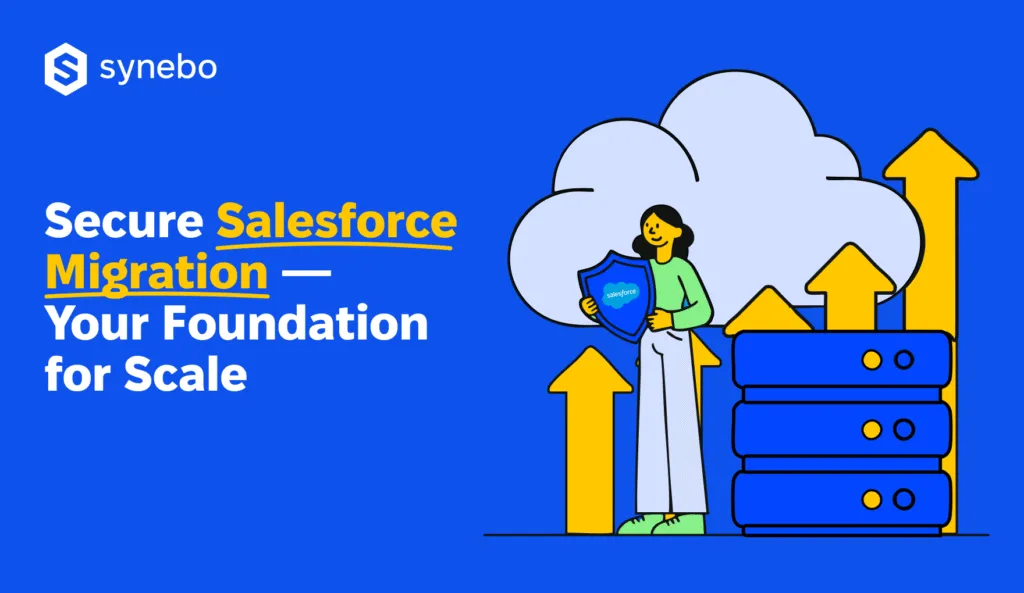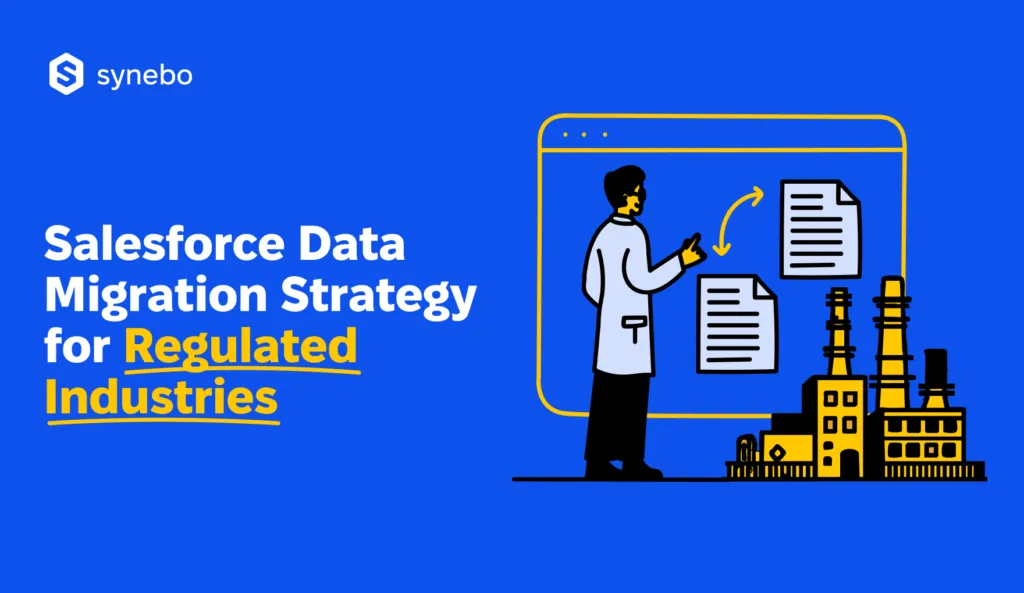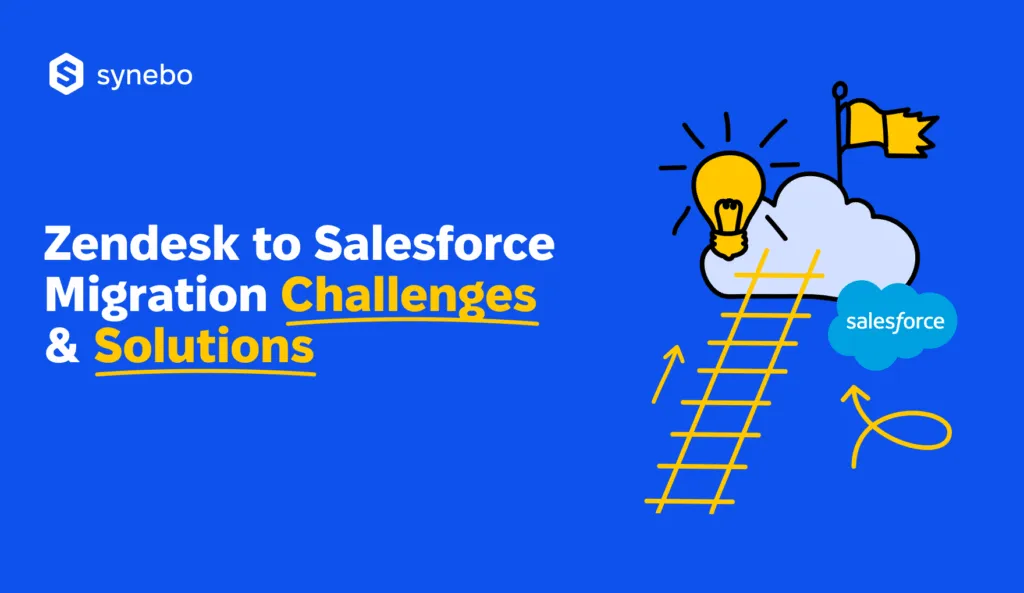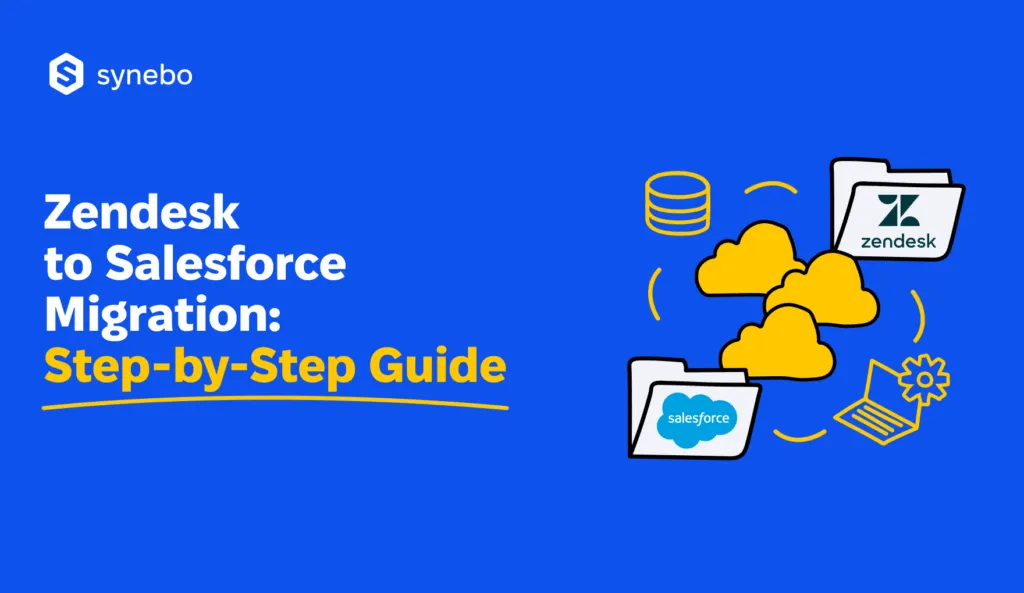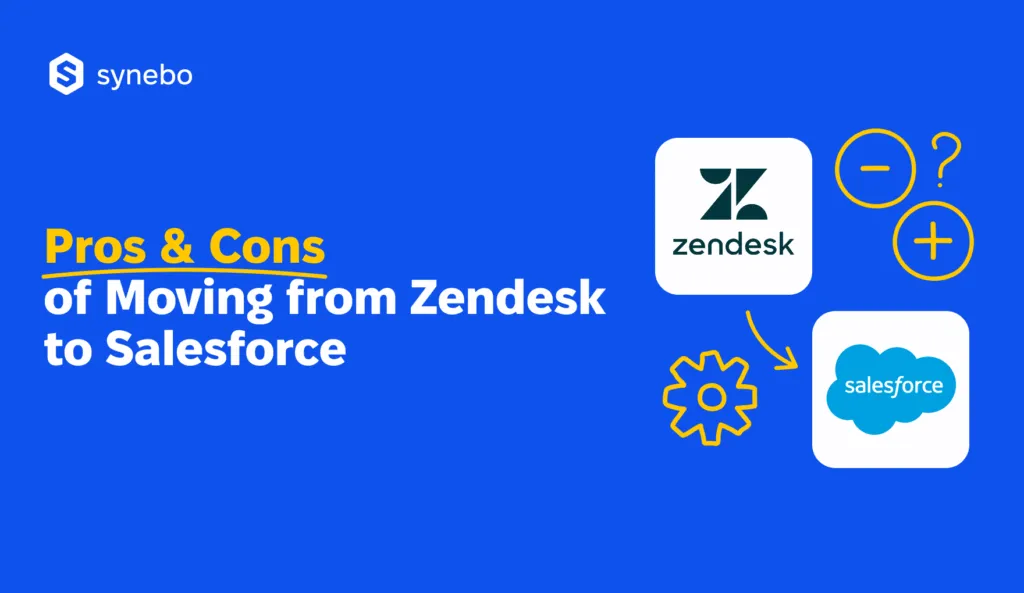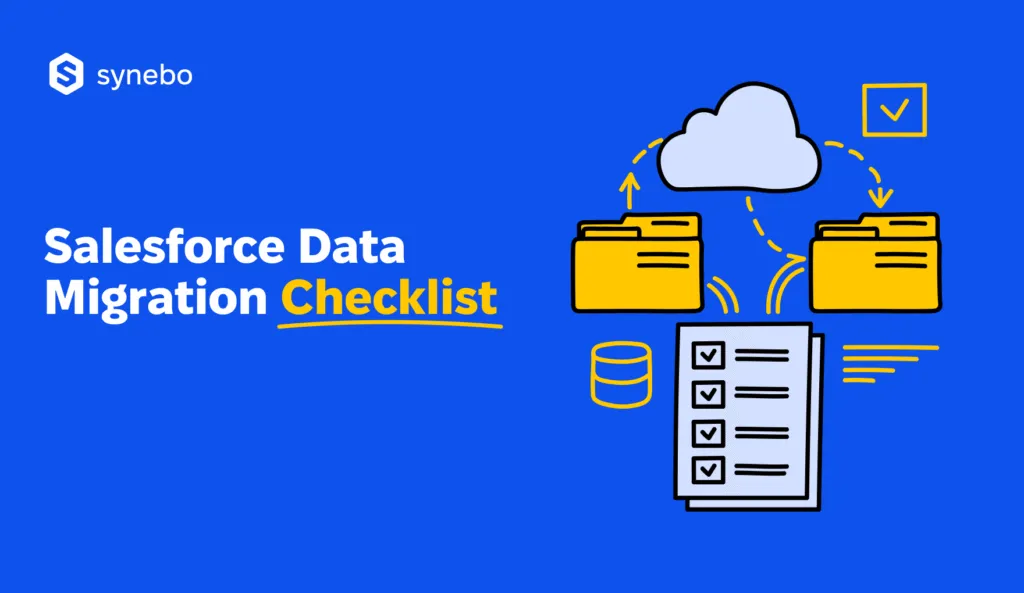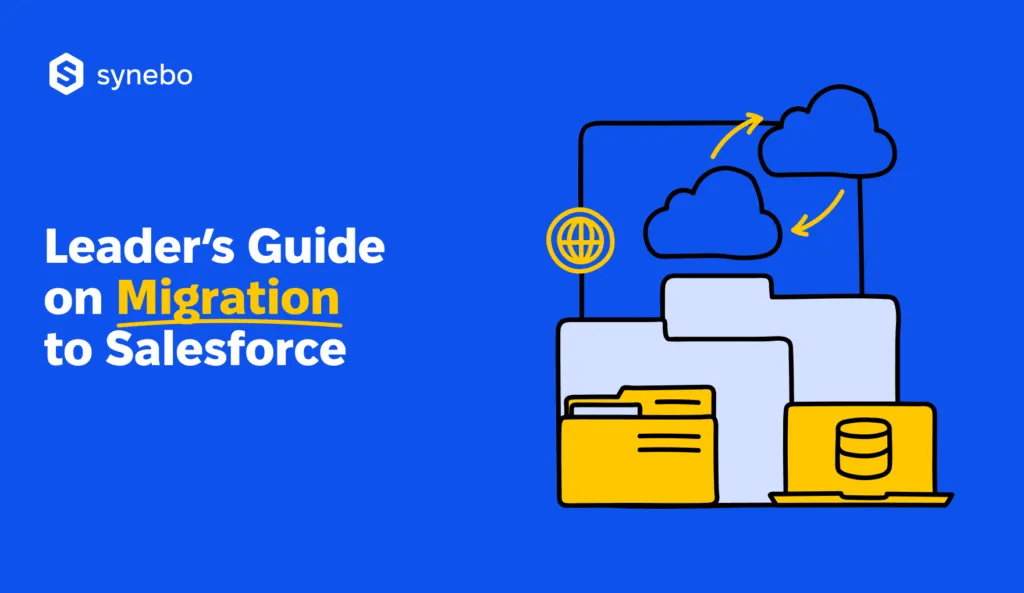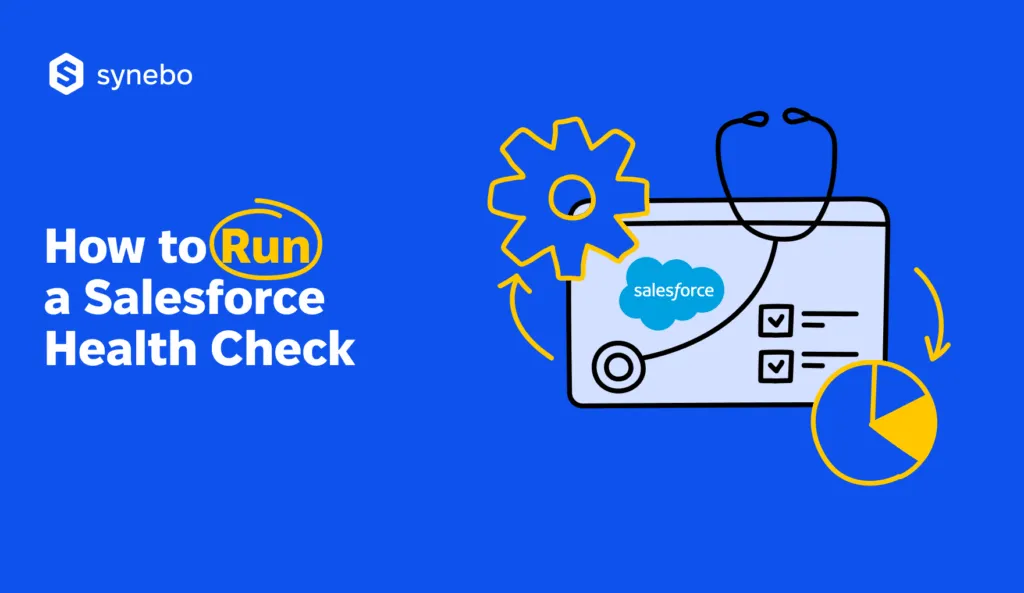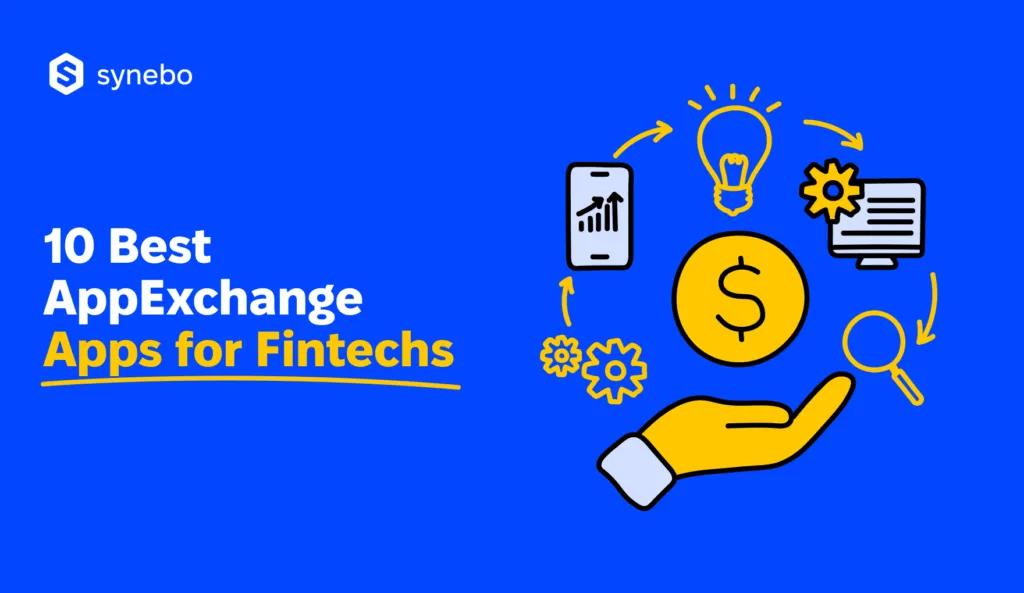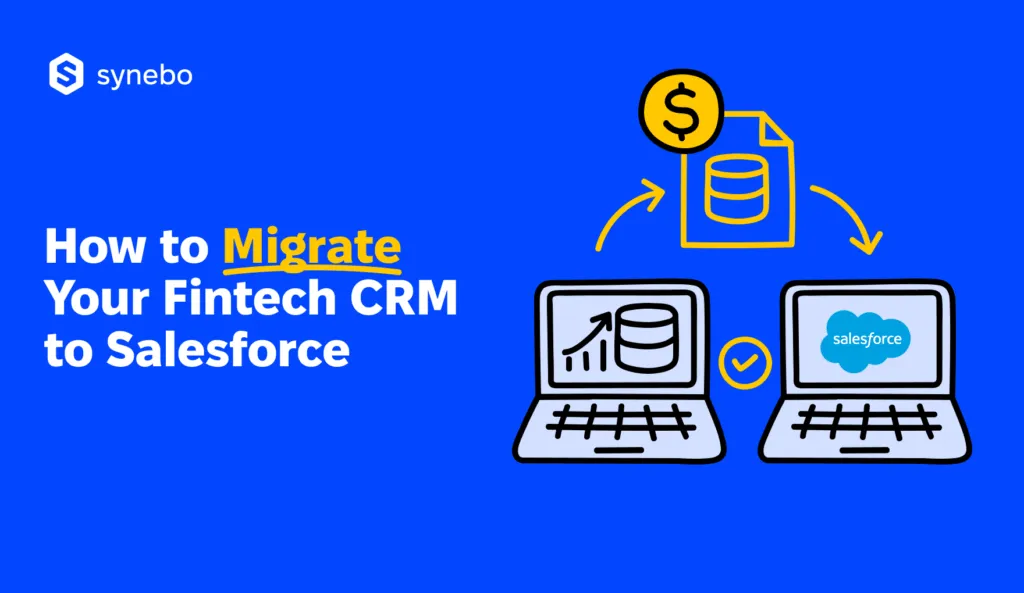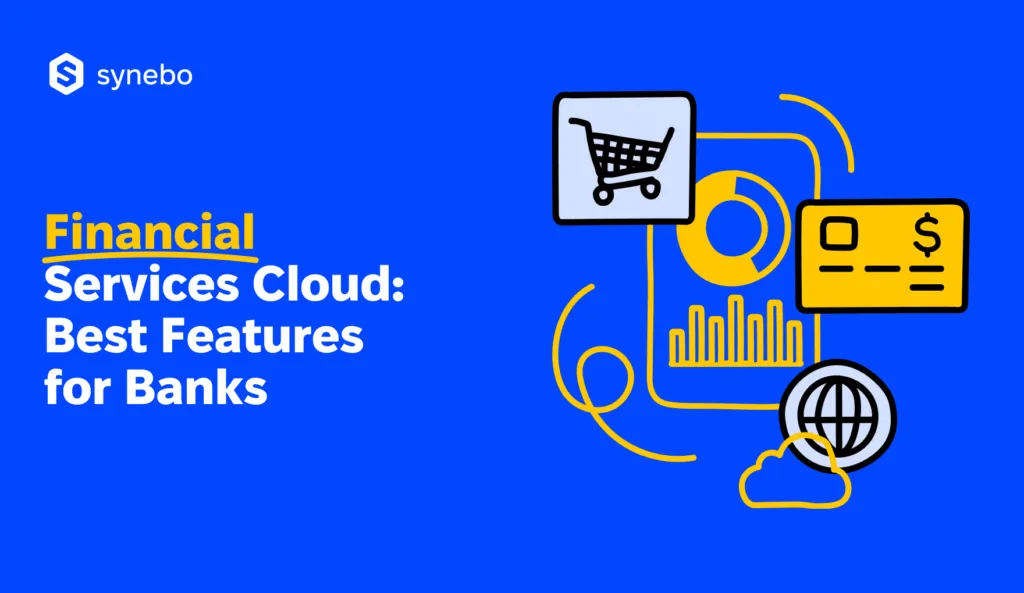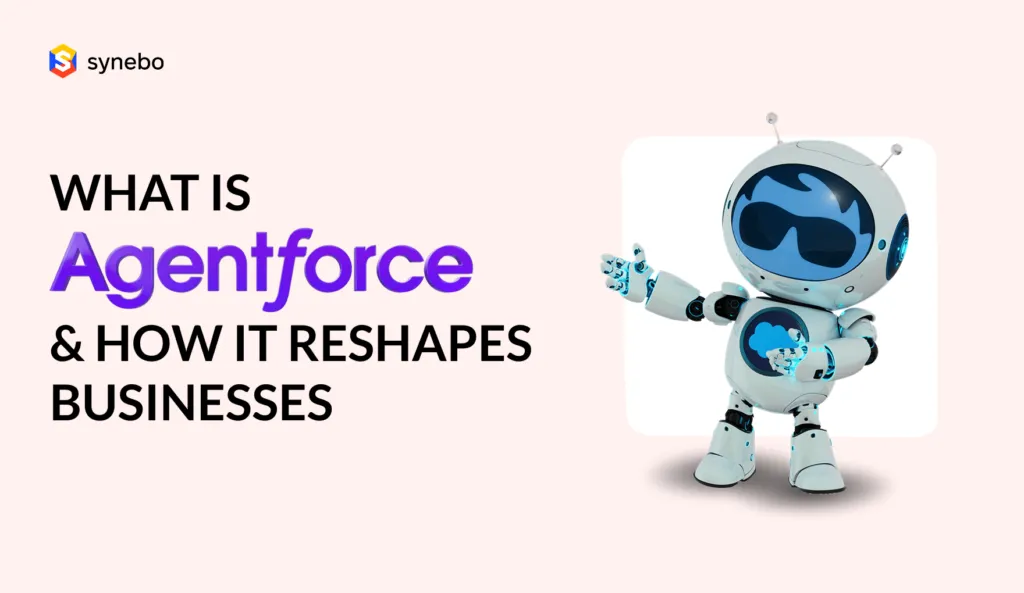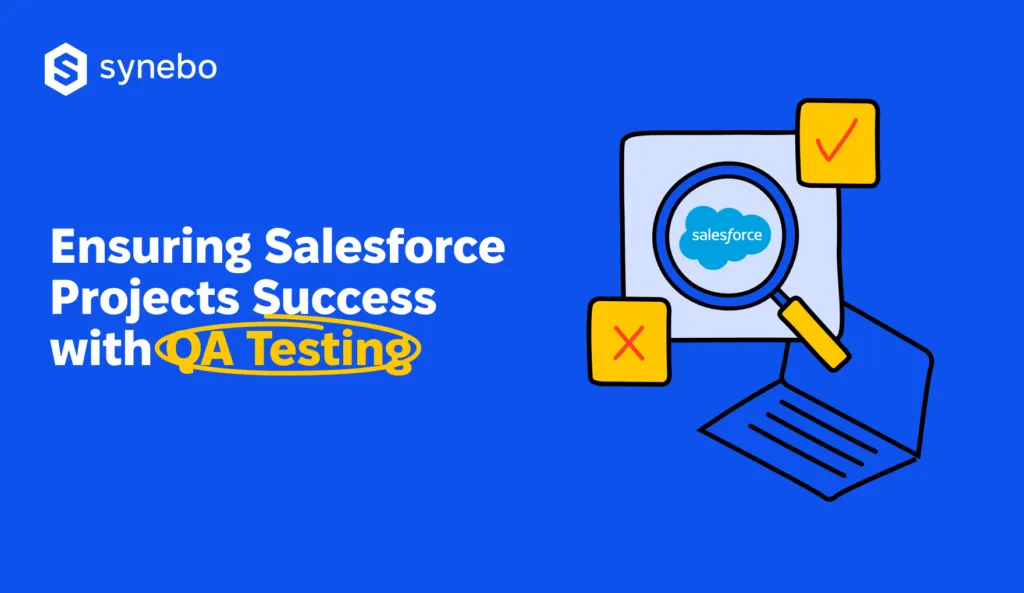Low Code vs No Code: Choosing the Best Salesforce Development Approach

By 2025, 70% of new applications developed by enterprises will utilize low-code or no-code technologies, a substantial increase from less than 25% in 2020. The rise of no code low code platforms is driven by the increasing demand for rapid application development and the shortage of IT professionals.
As a leading Salesforce development company, Synebo understands the importance of choosing between the low code vs no code approach to Salesforce development. In this article, we will delve into the key differences and considerations between low code and no code development, helping you make an informed decision for your business.
What Is Salesforce Low Code, No Code Development?
Salesforce low-code and no-code development refer to modern approaches for building applications and automation within the Salesforce ecosystem.
Basically, low code and no code development allow leveraging minimal to no traditional coding to expedite development processes and empower a broader range of users.
Let’s talk about each approach in-depth to understand the difference between no code vs low code Salesforce development.
Salesforce No-Code Development
No-code development refers to the process of creating software applications without the need for traditional coding.
It empowers business users to build functional applications through visual interfaces and pre-built components. With no-code platforms like Salesforce Lightning, users can leverage drag-and-drop functionality to create custom applications, automation, and workflows with minimal coding knowledge.
Salesforce no-code development is revolutionizing the way businesses approach application development by democratizing the process. It allows individuals from various backgrounds, including business analysts, project managers, and entrepreneurs, to actively participate in creating solutions without being dependent on IT departments. This agility in development empowers organizations to quickly respond to market changes and customer demands, accelerating innovation and time-to-market for new products and services.
Salesforce Low-Code Development
Low-code development combines the ease of visual development with the flexibility of coding.
Low-code platforms, such as Salesforce App Cloud, provide a range of pre-built components and templates that can be customized through a visual interface. They also offer the ability to incorporate custom code when necessary to meet specific business requirements.
Low-code development bridges the gap between business users and professional developers, enabling collaboration and faster delivery of applications. More specifically, Salesforce low-code development can reduce application development time by up to 60%, allowing businesses to respond quickly to market changes and innovate faster.
By allowing developers to focus on more complex coding tasks while business users handle the visual aspects and logic of applications, low-code platforms promote efficiency and innovation within organizations. This hybrid approach to development not only increases productivity but also fosters a culture of continuous improvement and learning as teams work together to deliver high-quality solutions.
Looking for professional advice on Salesforce implementation? Leverage our Synebo’s Salesforce Consulting Services to drive your CRM success with expert guidance.
The Pros and Cons of No-Code Development

No-code development offers significant advantages such as ease of use and rapid prototyping, but it also comes with limitations in customization, integration capabilities, and potential security concerns. Let’s explore each aspect in detail.
Benefits of No-Code Development
- Rapid prototyping and development: Enables individuals to quickly build and prototype applications, reducing development cycles and time-to-market.
- Enhanced collaboration: Promotes collaboration between business stakeholders and developers, facilitating faster iterations and quicker feedback loops.
- Democratizes app development: Empowers individuals from various backgrounds to create functional applications without needing in-depth coding knowledge.
- Increased innovation: Encourages more employees to contribute ideas and bring them to life through no-code platforms, fostering innovation within organizations.
Limitations of No-Code Development
- Complexity constraints: Limited in handling complex or highly customized applications that may require advanced coding skills beyond the capabilities of a no-code platform.
- Functionality and integration limitations: Certain functionalities or integrations may not be readily available or may require additional configurations.
- Vendor lock-in: Users might be constrained by the features and capabilities of the chosen platform, affecting flexibility and scalability in the long run.
- Trade-offs: It’s essential to consider the trade-offs between convenience and future growth when opting for a no-code solution.
Want to maximize the efficiency of your Salesforce instance? Get a comprehensive Salesforce Health Check with Synebo and ensure your system is running at its best.
The Pros and Cons of Low-Code Development

Understanding the benefits and drawbacks of low-code development is essential for evaluating its suitability for your organization’s needs, highlighting its potential for rapid development and customization as well as its limitations.
Benefits of Low-Code Development
- Visual development and coding flexibility: Combines visual development with the ability to incorporate custom code, providing greater control and extensibility.
- Accelerated development: Leverages pre-built components and templates to speed up Salesforce application development.
- Tailored solutions: Enables developers to create highly customized solutions that meet unique business needs.
- Drag-and-drop interfaces: Salesforce low code platforms often come equipped with drag-and-drop interfaces, making it easier for non-technical users to participate in the development process.
- Enhanced collaboration: Fosters collaboration between IT and other departments by empowering business users to input their ideas and requirements.
Limitations of Low-Code Development
- Complex customization needs: Projects with complex requirements may still necessitate significant customization using code, potentially increasing development time and complexity.
- Maintenance requirements: Reliance on custom code introduces the need for ongoing maintenance and regular updates to ensure stability and scalability.
- Specialized functionality challenges: Salesforce low code platforms may struggle with highly specialized or industry-specific functionalities, requiring workarounds or custom integrations to meet project requirements.
Read our detailed blog on proven best practices for Salesforce CRM optimization and take your CRM to the next level.
Comparing Low Code vs No Code Development
Now that we have analyzed each approach separately, let’s compare low code vs no code development to help you determine which is best suited for your specific business needs.
In the table below, you can get a clear comparison of these two development approaches and see how each can impact your Salesforce app development:
|
Criteria |
Low-Code |
No-Code |
|
Target Users |
Developers with some coding knowledge |
Business users with no coding knowledge |
|
Primary Objective |
Speed of development with some customization |
Ease of use and rapid prototyping |
|
Coding Requirement |
Low, but present |
None |
|
Customization Level |
High, allows for custom code |
Limited to pre-built templates |
|
Integration Capabilities |
Excellent system integration |
Limited, may face integration issues |
|
Speed of Development |
Fast, reduces development time by up to 60% |
Very fast, ideal for prototyping and simple apps |
|
Cost-Effectiveness |
Cost-effective for enterprises with development teams |
Highly cost-effective, reduces need for developers |
|
Scalability |
Highly scalable for complex applications |
Limited scalability, suitable for simple applications |
|
Security & Compliance |
Strong governance and compliance controls required |
Potential security gaps, requires strong oversight |
|
Vendor Lock-In |
Possible, but some platforms allow code export |
High, dependent on vendor’s platform |
|
Use Cases |
Enterprise-grade apps, legacy system modernization, complex internal applications |
Simple internal apps, rapid MVPs, departmental solutions |
Similarities Between Salesforce Low Code No Code
Both no-code and low-code development approaches aim to simplify application development and reduce the dependency on traditional coding. They offer visual interfaces, pre-built components, and templates that empower users to create applications with minimal coding knowledge. Both approaches can help organizations accelerate their development processes and deliver solutions more efficiently.
No code vs low code platforms have gained popularity in recent years due to their ability to democratize software development. By providing intuitive tools and drag-and-drop functionalities, low code vs no code platforms enable a wider range of users, including business analysts and citizen developers, to participate in the app creation process. This democratization of development empowers teams to quickly prototype ideas, iterate on solutions, and bring products to market faster.
Differences Between Salesforce Low Code No Code
While there are similarities, there are also key differences between low code vs no code platforms. No-code platforms prioritize ease of use and rapid application development, ideal for users who want to quickly build functional applications. On the other hand, low-code platforms strike a balance between visual development and coding flexibility, making them suitable for projects that require a higher level of customization or integration with existing systems.
Another important distinction between the low code vs no code approaches lies in their target users. No-code platforms are designed for users with little to no coding experience, focusing on empowering business users to create simple applications independently. In contrast, low-code platforms cater to developers with some coding knowledge who need to streamline the development process without sacrificing customization options. Understanding the specific needs and skill sets of your team is crucial in choosing the right development approach for your projects.
Interested in automating your Salesforce workflows? Check out our ultimate guide to mastering Salesforce automation tools and boost your productivity today.
Low Code Vs No Code: Choosing the Right Salesforce Development Approach
When it comes to selecting between no code vs low code Salesforce development approach for your project, there are several key factors that need to be taken into consideration. These factors can greatly influence the success and efficiency of your development process, ultimately impacting the overall effectiveness of your Salesforce solution.
Factors to Consider When Choosing a Development Approach
Choosing between low code vs no code development depends on various factors. Firstly, consider the complexity of your project and whether it requires advanced customizations or integrations. Evaluate the skill set of your development team and determine whether they have the necessary coding expertise. Consider the scalability and future growth of your solution, as well as the available resources and timeline for development.
Moreover, it is essential to analyze the specific needs and goals of your organization. Understanding the unique requirements of your business processes and workflows will help in determining which development approach aligns best with your objectives. Additionally, considering the level of support and maintenance required post-implementation is crucial for long-term success.
Making the Right Choice for Your Business
Ultimately, the decision between no code vs low code development comes down to your unique business requirements and priorities. If you prioritize speed, ease of use, and rapid prototyping, a no-code approach may be suitable. However, if you require more customization, control, and have the development expertise, a low-code approach may better suit your needs. It’s important to consult with experts and assess your specific project requirements before making a decision.
Need tailored solutions for your business? Explore Synebo’s Salesforce Managed Package Services to customize and enhance your Salesforce capabilities.
Here are the key takeaways from this article to help you quickly grasp the main points of low code vs no code comparison:
- No-code development enables business users to create applications with minimal coding knowledge, while low-code development combines visual development with coding flexibility.
- No-code development offers rapid application development, collaboration, and ease of use but may have limitations in complex scenarios or advanced customizations.
- Low-code development provides flexibility, customization, and extensibility but may require more development expertise and ongoing maintenance.
- Consider factors such as project complexity, development team skill set, scalability requirements, and available resources when choosing between Salesforce no code and low code.
Whether you opt for a low code vs no code development approach, Synebo is here to guide you through the decision-making process and help you implement the right approach for your business. As a certified Salesforce partner and PDO with 9+ years of experience, we specialize in custom CRM solutions that cater to your unique needs. From Salesforce consulting to development and integration, our expert team is equipped to handle projects of any complexity.
Low-code platforms often come with robust out-of-the-box connectors and APIs, making it easier to integrate with various data sources, third-party services, and legacy systems. This enhances the overall capabilities and value of applications built using low-code tools. On the other hand, no-code platforms might have limited integration capabilities, focusing more on simplicity and ease of use, which can sometimes lead to challenges when integrating with more complex systems.
Salesforce provides robust security measures including governance controls, data protection features, and compliance tools. Low-code platforms offer more flexibility for implementing custom security protocols, while no-code platforms are designed with built-in security features to ensure applications meet industry standards.
Yes, Salesforce’s low-code and no-code platforms are designed to integrate seamlessly with other Salesforce products such as Sales Cloud, Service Cloud, and Marketing Cloud. Additionally, these platforms can connect with third-party applications via APIs, enhancing their functionality and interoperability.
Low-code platforms help bridge the gap between business and IT by allowing developers and non-developers to collaborate more effectively. Business users can actively participate in the development process, which leads to better alignment with business needs and faster delivery times. No-code platforms further enhance this collaboration by enabling business users with little to no technical knowledge to create applications themselves, thus reducing the dependency on IT and accelerating innovation.
Low-code development is typically used for creating complex, scalable enterprise applications, automating business processes, and modernizing legacy systems. No-code development is ideal for rapid prototyping, developing internal tools, and creating simple applications like forms, surveys, and basic workflow automations.


